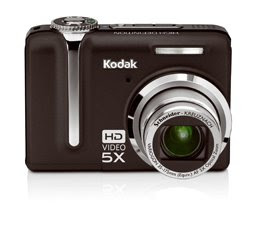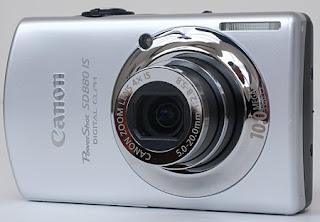This is one of my favorite photographs. It shows an 1871 lighthouse in Sodus Point, NY. I captured the photo with a $150 Kodak point-and-shoot digital camera, the Kodak C875, an 8-megapixel camera. Eight MP is considered the "entry level" resolution in most of today's cameras, but in 2006, this was the top camera in Kodak's 'entry level' line up. The secret to this photo is a function in the camera called "long time exposure." The C875 permits you to make exposures up to 8 seconds long. That's plenty of time to capture all the colors in the sky -- including a few that weren't obvious to the naked eye, that night. The camera took in plenty of light. A tripod, of course, is essential. That's all I did. And, in case you're curious, the resulting image required no post-production editing. I sent the file off to AdoramaPix, and they sent me back amazing 11 x 14-inch prints.












